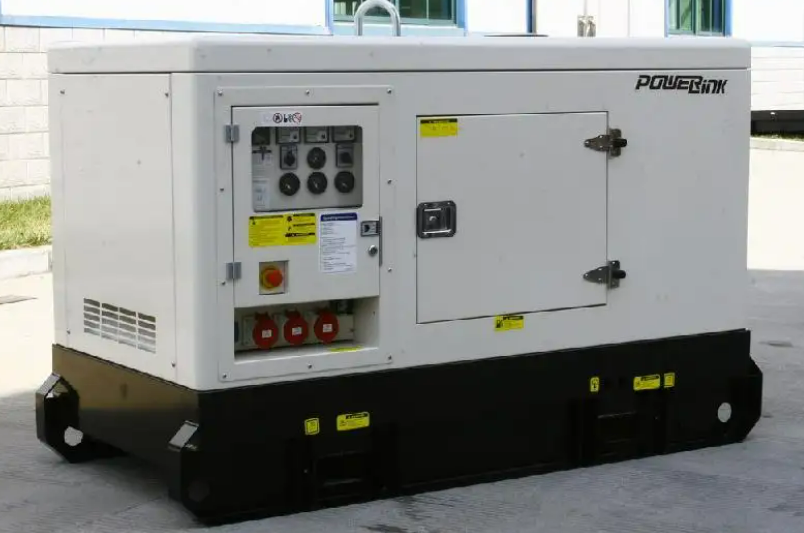How to choose the right diesel generator size for UPS systems
The AC power supply system is composed of a diesel generator set and UPS is widely used because of its good reliability and safety. The system not only requires a high degree of automation but also requires that the diesel generator set must adapt to the characteristics of the nonlinear load UPS so that it can ensure reliable power supply to the load when there are no mains. Input off-line characteristics determined by UPS circuit structure: Traditional double transform online UPS, because its input AC/DC converter is a rectification and filtering circuit, the input current is pulsating current, not only the input power factor is low (0.7~0.8), but also contains a large number of high harmonic charging (30%~40%), and low input power factor and harmonic current will pass through the inductive internal resistance of the generator stator coil, The normal operation of diesel generators is seriously affected, and the combination of the two is prone to the following problems:

- Voltage oscillation. The feedback voltage fluctuation causes the output voltage stability of the generator to be poor, and the oscillation range is up to ±10% ~ ±20% of the rated voltage. When the AVR is adjusted to the optimum, the oscillation is still greater than 2%.
- Current oscillates. When the UPS load is stable, the output current of the generator swings within the range of ±20%± 50% and cannot be adjusted.
- Frequency oscillation. In general, the frequency oscillation is smaller than the voltage and current range, generally within ±5%, but causes the UPS to switch frequently. Due to the regular increase and decrease of the load of the diesel engine, its working voltage also increases and decreases, which intensifies the vibration of diesel generator set, accelerates the mechanical wear, and even damages the parts.
- The UPS does not work properly. The allowed input voltage range of the UPS rectifier is generally ±15% of the rated value or wider. The unstable output voltage of the generator has little impact on the normal operation of the UPS. Therefore, special attention should be paid to the impact of frequency drift on the normal operation of the UPS:
- The UPS cannot be bypassed. When the bypass power supply frequency and voltage are within the allowed range, the inverter output of the UPS tracks the bypass power supply. The inverter and the bypass power supply phase lock and synchronize. When a bypass power generator is provided, the frequency can change rapidly. When the frequency change exceeds the preset limit value, the inverter frequency change cannot keep up with the frequency change of the bypass power supply. In this case, the static bypass switch will not switch to the bypass. (Switching in this case may cause overcurrent or short circuit of the inverter.) In this case, the bypass power frequency cannot be tracked, the UPS only alerts the user to avoid power failure caused by overload. In this case, the inverter continues to supply power to the load.
- Battery life is shortened. Due to frequency drift, the drive signal of SCR (SCR) rectifier will be out of sync with the input AC, resulting in rectifier shutdown. The UPS switches to battery power while the rectifier restarts and enters normal operation. Such an excessive discharge cycle, will greatly shorten the battery life, more serious situation is the battery will all the light, output interruption. In addition, in the same electrical system, when the air conditioning compressor starts and the elevator lifts up and down the moment will cause the generator frequency drift.
The problems caused by the combination of the diesel generator set and UPS can be solved: firstly, the correct selection of generator excitation mode and unit power, different excitation mode and appropriate matching power and so on can minimize the problem; Second, choosing the UPS that is more suitable for the characteristics of the generator set. For example, the UPS with the function of bypass phase-locked frequency range and field adjustable inverter synchronization rate has better adaptability to frequency drift than the general UPS. The 12-pulse rectifier UPS is more suitable for the power supply of the generator set than the 6-pulse rectifier UPS, so as to ensure the safe and reliable operation of the entire power supply system.

Power output
Generally, the capacity of the supporting generator set is 2 to 2.5 times that of the UPS. In fact, a UPS typically operates at 50 to 80 percent of its rated capacity, while a generator set may produce around 30 percent of its rated capacity. This not only causes the capacity of the generator set can not be fully utilized, increases the cost, and makes the generator set more prone to failure, increases the amount of maintenance, reduces the reliability of the generator set. The reason is: according to the characteristics of the diesel engine, if under a small load for a long time, the cylinder wear intensifies, so that the above parts of the fault acceleration, the diesel engine performance is reduced, the exhaust smoke.
Diesel engine economy becomes worse under 30% rated load. The diesel engine generator set requires that the load must work at more than 60% of the rated load to be more beneficial to the diesel engine. So proper power matching is very important for the power supply system. When choosing the rated power of the generator set, the total load of electricity must be considered first. A load of other electrical equipment has been explained in a lot of data, which is no longer described here. The power required by battery charging must also be considered (generally controlled within 10% ~ 20% of the maximum output power of the UPS). It is necessary to increase the power of the generator more than 2 times the power of the UPS.
The way diesel engines work
The recent operation practice proves that when the rated output power of two generators is the same, the load capacity of the two-stroke diesel generator set is better than that of the four-stroke diesel generator set if the user’s rear load is nonlinear.
Excitation mode of the generator
Diesel generators are divided into self-excited synchronous alternator and PMG (permanent magnet generator) excitation types. The difference between them is that the former provides both power and signal source to the voltage regulator AVR from the armature winding of the generator, while the PMG (permanent magnet generator) AVR power source is obtained from the armature winding of the secondary exciter (permanent magnet generator), and the armature winding of the AC synchronous generator only provides signal source. The power output of the former AVR is affected by the potential waveform of the armature winding, while the load quality, especially the nonlinear load, has an obvious influence on the potential waveform of the armature winding. The power source of the latter AVR is taken from the armature winding of PMG, which has nothing to do with the distortion of the potential waveform of the armature winding of the synchronous alternator. Therefore, a synchronous alternator with PMG (permanent magnet generator) excitation mode can make UPS work better. When an autonomous synchronous alternator is used, the power ratio between the UPS and the diesel generator set should be at least 1 (2 ~ 2.5), but the effect of the generator on the UPS cannot be excluded. When PMG excitation generator is used, the power ratio of 1 (1.2 ~ 1.25) can ensure the normal operation of the diesel generator set.



